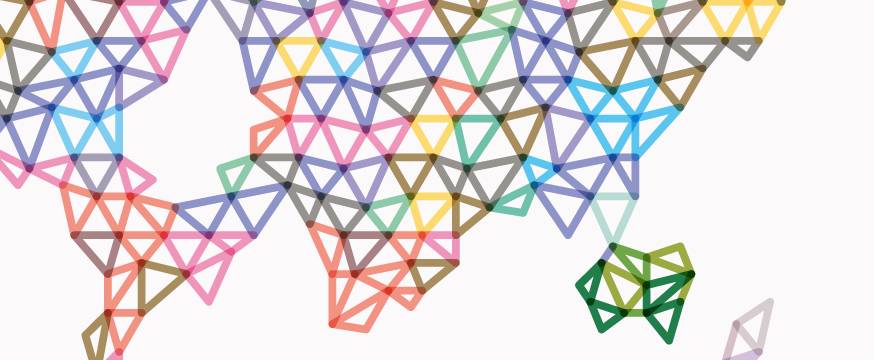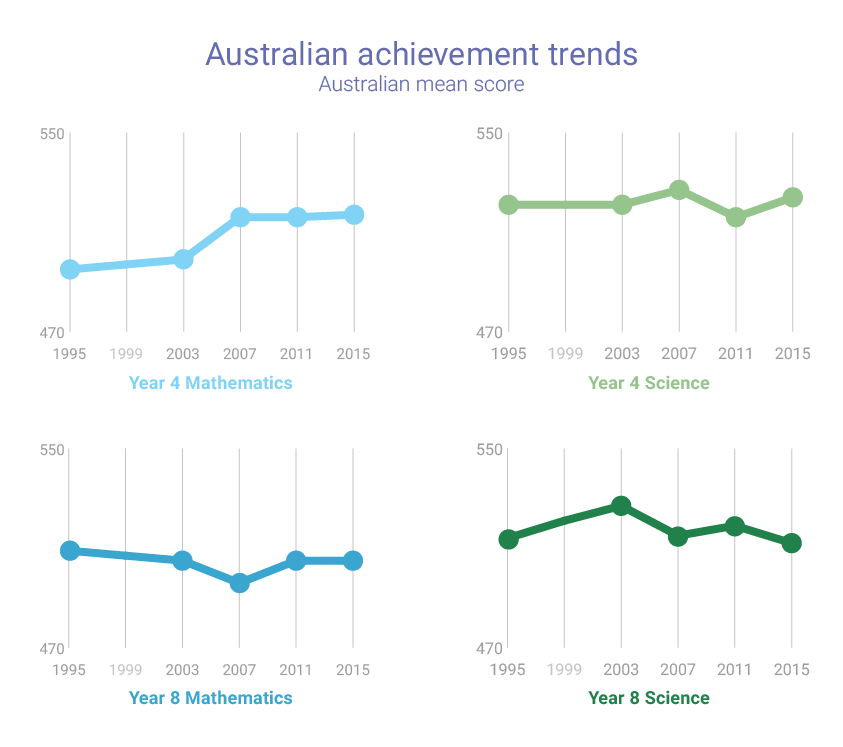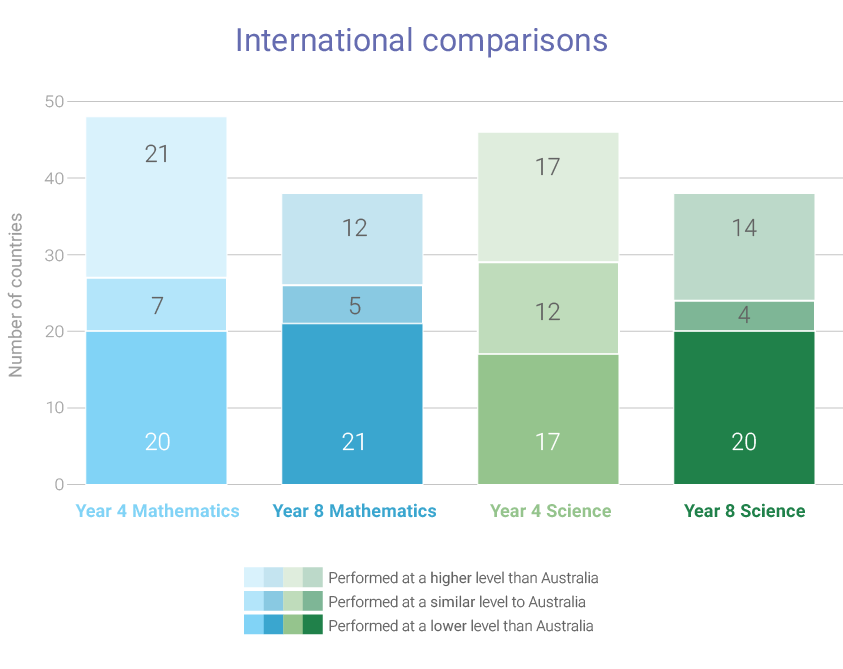
Examining Australia’s achievement in TIMSS 2015
Research 29 Nov 2016 9 minute readResults from an international study of mathematics and science achievement reveal no improvement in the performance of Australian students.
The Australian Council for Educational Research (ACER) released the national report of the 2015 Trends in International Mathematics and Science Study (TIMSS), titled TIMSS 2015: A first look at Australia’s results, in November 2016.
TIMSS measures Years 4 and 8 students’ achievement in the mathematics and science curriculum every four years, and is a project of the International Association for the Evaluation of Educational Achievement (IEA) directed by the TIMSS International Study Center at Boston College. ACER has managed the implementation and reporting of TIMSS in Australia since the assessment program began in 1995.
A combined total of more than 630 000 students took part in TIMSS 2015 worldwide, including a nationally representative sample of more than 16 000 Australian students from 572 schools. Australia’s achievement can be compared to 48 other countries that participated in the Year 4 assessment and 38 other countries that participated in the Year 8 assessment.
TIMSS 2015 shows the mathematics and science achievement of Australia’s Years 4 and 8 students over the past 20 years has flatlined, while many other countries have improved.
Figure 1: Australian achievement in TIMSS since 1995
Australia’s international performance in TIMSS 2015, after accounting for insignificant differences between countries’ and economies’ results was:
- equal 22nd in Year 4 mathematics;
- equal 13th in Year 8 mathematics;
- equal 18th in Year 4 science; and
- equal 15th in Year 8 science.
Figure 2: Number of countries/economies in TIMSS 2015 in relation to Australia
Year 4 mathematics
As shown in Figure 1, Australia’s Year 4 mathematics scores have been the same for the past three cycles of TIMSS, following a significant increase between 2003 and 2007.
Hungary and the Czech Republic, which performed similarly to Australia in Year 4 mathematics in 2011, outperformed Australia in 2015. Sweden, Kazakhstan, England, Portugal, Cyprus and Slovenia, which all previously performed at a lower level than Australia, have since improved to perform similarly to or better than Australia in Year 4 mathematics in 2015.
In Year 4 mathematics, 30 per cent of Australian students did not achieve the TIMSS Intermediate international benchmark – the nationally agreed proficient standard for Australia, which ‘represents a “challenging but reasonable” expectation of student achievement at a year level with students needing to demonstrate more than elementary skills expected at that year level’ – compared to two per cent in Hong Kong, three per cent in Korea, 20 per cent in England, 21 per cent in the United States of America, 31 per cent in Canada and 41 per cent in New Zealand. Only nine percent of Australian students achieved the Advanced international benchmark in Year 4 mathematics, compared to 50 per cent in Singapore, 45 per cent in Hong Kong, 17 per cent in England, 14 per cent in the USA, and six per cent in Canada and New Zealand.
On average internationally, and in 23 of the 49 participating countries and economies, there was no significant difference between the Year 4 mathematics achievement of boys and girls. Girls scored higher than boys in eight countries, while Australia was one of 18 countries in which Year 4 boys scored higher than girls in mathematics. This is the first time in 20 years that Australia has had a gender difference in Year 4 mathematics achievement in TIMSS.
Year 8 mathematics
Australia’s 2015 score for Year 8 mathematics was the same as in 1995, after experiencing a slight dip in 2007 then recovery in 2011, as shown in Figure 1.
England, the USA, Slovenia, the Russian Federation and Ireland, which performed below or similarly to Australia in 1995, have since improved to perform better than Australia in Year 8 mathematics in 2015. Examining two of the countries which performed lower than Australia in Year 8 mathematics in 2011, this time Kazakhstan outperformed Australia, and Sweden performed similarly to Australia.
In Year 8 mathematics, more than one-third (36 per cent) of Australian students did not achieve the Intermediate benchmark compared to six per cent in Singapore, seven per cent in Korea, 22 per cent in Canada, 30 per cent in the USA , 31 per cent in England and 42 per cent in New Zealand. Only seven per cent of Year 8 Australian and Canadian students achieved the Advanced benchmark in Year 8 mathematics, compared to 54 per cent in Singapore, 44 per cent in Chinese Taipei, 10 per cent in England and the USA, and six per cent in New Zealand.
There was no significant difference between the mathematics scores of Year 8 boys and girls in 26 of the 39 participating countries, including Australia, or on average internationally. Year 8 boys scored higher than girls in mathematics in six countries, while girls performed higher than boys in seven countries.
Year 4 science
Australia’s 2015 score for Year 4 science is similar to that of 1995, having recovered from a decline in 2011, as shown in Figure 1.
Singapore, England, Slovenia and Croatia, which performed similarly to Australia in Year 4 science in the past, outperformed Australia in 2015. Spain, Kazakhstan, Hong Kong, Slovenia and Hungary, which previously performed lower than Australia, have also since improved to perform better than Australia in Year 4 science in 2015. However, Germany, Denmark, the Slovak Republic, Netherlands and Italy, all of which performed better than Australia in Year 4 science in 2011, performed similarly to Australia in 2015.
In Year 4 science, 25 per cent of students did not achieve the Intermediate benchmark, compared to four per cent in Korea, seven per cent in Japan, 19 per cent in England and the USA, 23 per cent in Canada and 33 per cent in New Zealand. Only eight per cent of Australian students achieved the Advanced benchmark in Year 4 science, compared to 37 per cent in Singapore, 29 per cent in Korea, 16 per cent in the USA, 10 per cent in England, seven per cent in Canada and six per cent in New Zealand.
On average internationally, girls outperformed boys by a small margin in Year 4 science, with significant differences in favour of girls found in 11 of the 47 participating countries and economies. Australia was one of 25 countries in which there was no significant difference between the science achievement of girls and boys at Year 4, while a further 11 countries had small differences in favour of boys.
Year 8 science
Australia’s score in Year 8 science is similar to that of 1995, after peaking in 2003 then falling in 2007, as shown in Figure 1.
Slovenia, the USA, Hungary, Sweden, the Russian Federation, Ireland and Hong Kong, which performed similarly to Australia in Year 8 science in the past, outperformed Australia in 2015. Lithuania and Kazakhstan, which performed lower than Australia in Year 8 science in 2011, performed similarly to or better than Australia in 2015.
In Year 8 science, 31 per cent of Australian students did not achieve the Intermediate benchmark, compared to 10 per cent in Singapore, 11 per cent in Japan, 22 per cent in Canada, 23 per cent in England, 25 per cent in the USA and 33 per cent in New Zealand. Only seven per cent of Australian and Canadian students achieved the Advanced benchmark in Year 8 science, compared to 42 per cent in Singapore, 27 per cent in Chinese Taipei, 14 per cent in England, 12 per cent in the USA, and 10 per cent in New Zealand.
On average internationally, girls outperformed boys in Year 8 science, with significant differences in favour of girls in 15 of the 39 participating countries and economies. Five countries reported modest differences in favour of boys, while Australia was one of 19 countries in which there was no significant difference between the achievement of girls and boys. This was a first for Australia, following gender differences in favour of boys in all previous cycles of TIMSS since it began in 1995.
Trends by state or territory
The 2015 TIMSS summary report also examines Australian achievement by state and territory.
In Year 4 mathematics, New South Wales, Queensland, South Australia, Western Australia and Tasmania all achieved higher scores in 2015 than in 1995, while the remaining states and territories showed no significant change. The only significant differences in Year 8 mathematics achievement over the same period were an increase in Victoria and a decrease in Western Australia.
In Year 4 science, Queensland was the only state or territory to show a significant difference in performance since 1995, having achieved a higher score in 2015. The only state or territory to record a significant difference in Year 8 science achievement over the past 20 years was Victoria, which performed better in 2015 than in 1995.
Achievement by student background
Indigenous status
The gap in the average mathematics and science achievement of Indigenous and non-Indigenous students has changed little over the past 20 years.
Table 1: Percentage of students meeting or exceeding the Intermediate and Advanced benchmarks
|
|
Indigenous |
Non-Indigenous |
||
|
|
Intermediate |
Advanced |
Intermediate |
Advanced |
|
Year 4 mathematics |
39 |
1 |
72 |
10 |
|
Year 8 mathematics |
32 |
1 |
66 |
7 |
|
Year 4 science |
47 |
2 |
77 |
8 |
|
Year 8 science |
42 |
1 |
70 |
8 |
Socioeconomic status
Using students’ self-report of the number of books in their home as a proxy for socioeconomic status, TIMSS found that in mathematics and science in Years 4 and 8, students who have many (201+) books in the home scored higher on average than students with an average number of books (26-200) in the home, who in turn scored higher on average that students with few (0-25) books in the home.
Year 8 students also provided information about the highest level of education attained by their parents as a further proxy for socioeconomic status. On average for Australian Year 8 students, the higher their parents’ education, the higher the student’s achievement in mathematics and science.
In addition to reporting on the number of books in their home and their parents’ education, Year 8 students also reported whether they had their own room and an internet connection. These variables were then converted into a measure of educational resources in the home. On average for Australian Year 8 students, the higher the number of educational resources in the home, the higher the student’s achievement in mathematics and science.
Location
On average, students attending schools in metropolitan areas achieved higher than students attending schools in provincial areas, who in turn achieved higher than students attending schools in remote areas.
Table 2: Percentage of students that did not meet the Intermediate benchmark
|
|
Metropolitan |
Provincial |
Remote |
|
Year 4 mathematics |
26 |
37 |
56 |
|
Year 8 mathematics |
34 |
40 |
59 |
|
Year 4 science |
22 |
30 |
45 |
|
Year 8 science |
30 |
35 |
53 |
Language spoken at home
Comparing student achievement in terms of whether the main language spoken at home is English or not, there were no significant differences found in Year 4 mathematics. In Year 8 mathematics, the proportion of students above the Intermediate benchmark was similar, although a higher proportion of students who speak a language other than English at home achieved the Advanced benchmark (17 per cent compared to six per cent of English-speaking students).
In Years 4 and 8 science, students who predominantly spoke English at home scored significantly higher on average than students whose main language at home was not English.
Read the full report:
TIMSS 2015: A first look at Australia’s results, by Sue Thomson, Nicole Wernert, Elizabeth O’Grady and Sima Rodrigues, ACER (2016).

